Profiles of Masters #1 - Satoshi Kon / Sylwetki Mistrzów #1 - Satoshi Kon
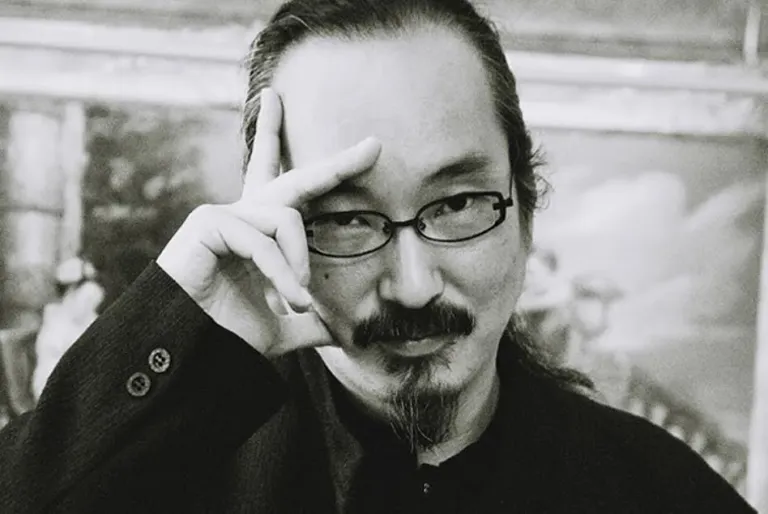
I would like to invite you to a new series of texts, which will be a collection of basic information about important, in my opinion, creators, voice actors, directors, etc. When I say the word "important", I mean people who have achieved professional success, have several important works under their belt and stand out from the competition in the industry. I decided to start with Satoshi Kon because he is one of the most important and talented creators I have met in my life.
Satoshi Kon was born on October 10, 1963 on the island of Sapporo. He died on August 24, 2010 from pancreatic cancer at the age of 46. He has worked as a director, animator, screenwriter and manga creator (both as a cartoonist and scriptwriter, and solely as a cartoonist). Satoshi knew what he wanted to do in the future already in high school. In 1982, he took the first step towards fulfilling his dreams by entering Musashino University of the Arts. His debut comic was a short titled Toriko released in 1984, thanks to which he won second place in the 10th edition of the Tetsuya Chiba competition organized by the Kodanasha publishing house. This small success certainly helped him to some extent in finding his first job. He became the assistant of Katsuhiro Otomo (director of the cult film Akira, which still makes a huge impression with its detailed and extremely smooth animation). After graduating, he published the 1-volume manga Kaikisen and wrote the screenplay for the film Otomo World Apartment Horror. A year later, he created the comic book World Apartment Horror, which was created in cooperation with Otomo (I don't know the details, but based on the description, it seems to me that it was mainly Satoshi's work, and Otomo only helped him with his recognizable name, collecting part of the profits). It is a collection of 4 stories that are a manga adaptation of an earlier film. This was not the end of their cooperation, because in 1991 Satoshi made his debut as an animator and as a background designer in a film for which Otomo wrote the script. The anime is called Roujin Z.
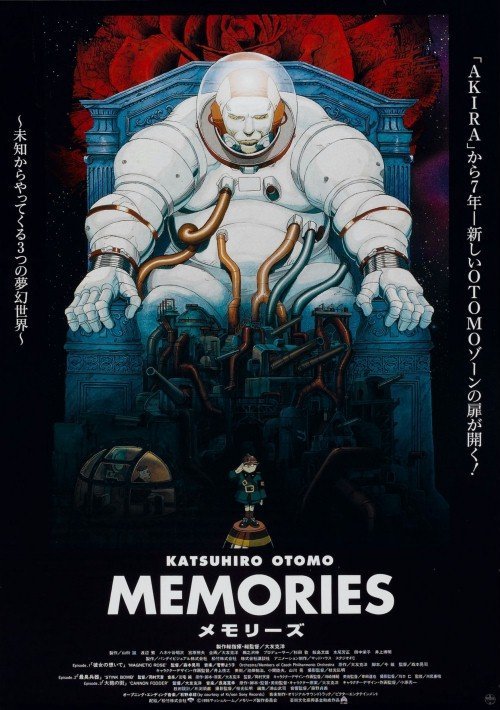
In 1992, he expanded the scope of his work with three short films that made up a collection titled Memories. Their director was Koji Morimoto, and Satoshi was responsible for the script, background design and graphics. This is an important point in his career because for the first time he used his advantage - his extraordinary ability to combine fantasy with reality. This is clearly visible in his Perfect Blue, Millennium Actress, Paprika, and the only animated series - Paranoia Agent. These films give the impression that Satoshi Kon used drugs that expand human consciousness. I don't know if that was actually the case, but I wouldn't be surprised. Especially since his films have a strong impact on the imagination and psyche. Millennium Actress and Paprika, especially this 1st title, is a "positive trip". Paprika and Tokyo Godfathers are a bit positive and a bit sad, while PB and PA are a roller coaster ride.
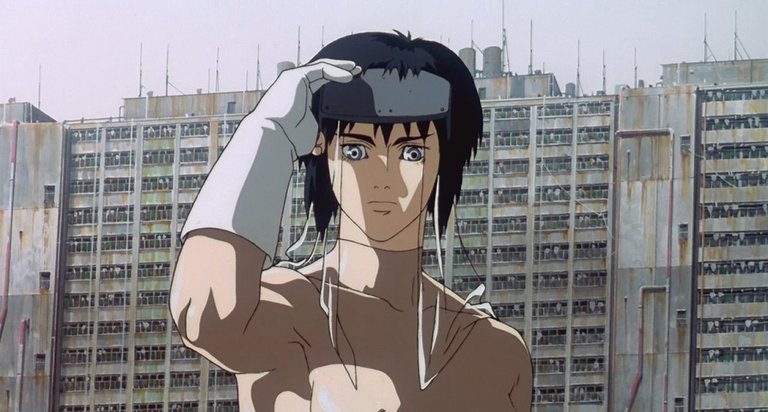
This was not his only contact with the cult creator. Another big name he worked with was Mamoru Oshii. If you don't know him, in 1995 he changed the fate of world cinematography and pop culture forever by creating the cult adaptation of the comic book Ghost in the Shell. If you are young, you may not know that the premiere of this film inspired creators all over the world and we still hear its echoes to this day. For example, in the form of the game Cyberpunk 2077. However, before he finished working on GitS, Mamoru was creating the second cinematic film Patlabor. Satoshi Kon was one of the five main artists. He also co-created the famous OVA Jojo's Bizzare Adventure - in the second episode as a key animator, and in episode 5 he was responsible for the script and storyboards. Their cooperation did not end very positively. Satoshi and Mamoru co-created the manga Seraphim: Wings of 266,613,336 (Satoshi was responsible for the drawings and Mamoru was responsible for the plot). However, as subsequent chapters were released, the visions of both creators began to differ more and more. As a result, work on the comic book was first suspended and then stopped. Then, the director decided to limit the creation of comics and focused on creating anime.
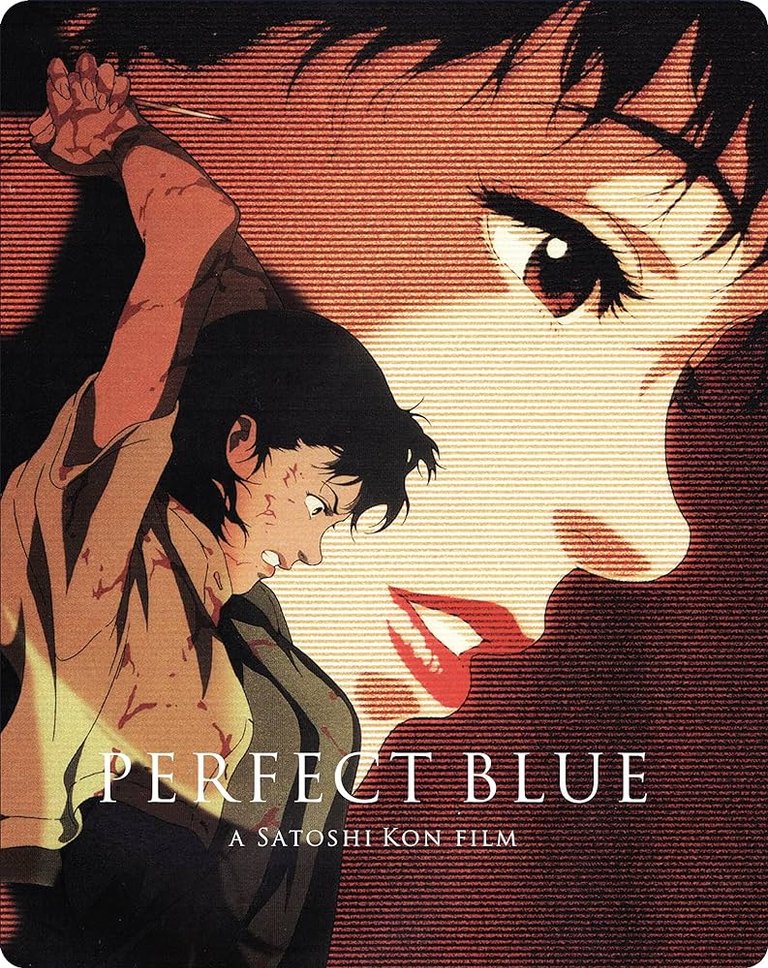
His debut film was Perfect Blue released in 1998. This film remains one of the best psychedelic productions I have ever seen in my life. If you like Darren Aronofsky's films, you will like the Japanese's films. Both directors love to stick a white-hot rod into our brains to drive us crazy. Btw. I recommend watching Black Swan - it's the best anime adaptation made by Hollywood. Well, right after Pacific Rim, which is an adaptation of NGE. Only in the case of the Natalie Portman film did Darren borrow significantly more than Del Toro. Every time I watch this movie I get a two-day hangover. Not only is it hard to read, but it's also dirty. Emotional muck drags us to the bottom, and dirt on the screen (like in good old sci-fi films from decades ago, I miss it in today's too clean productions) acts like an emollient drug. I love this movie. By the way, while writing this text, I found out that it is an adaptation of the novel by Yoshizaku Takeuchi... Well, in 2025 I will write a review of it.
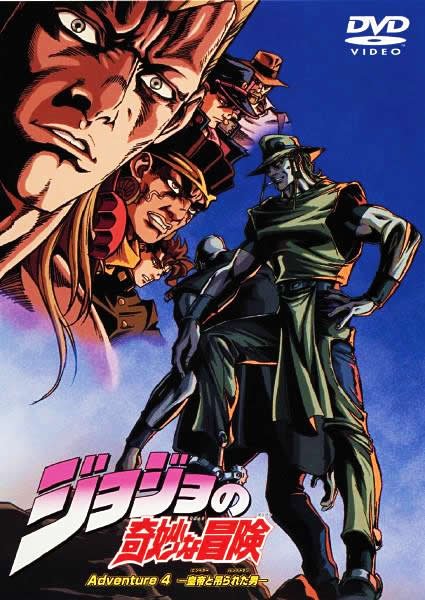
Coming back, this is the first film by Satoshi Kon and the Madhouse studio. This was the initiative of a producer named Masao Maruyama, who was pleased with Satoshi's work on Jojo. The director was not satisfied with the first version of the script and asked the writer for permission to make changes. The author of the book agreed to his request, but set one condition. Satoshi had to keep 3 key elements: the idol theme, the horror atmosphere and the stalking theme. The script was revised by Sadayuki Murai, who, from what I understood of the source text, shared the vision of blurring the line between reality and imagination. In '97 and '98 he helped on episode 2 of Detatoko Princess and episode 15 of Master Keaton, respectively. In both cases as Key Animator.
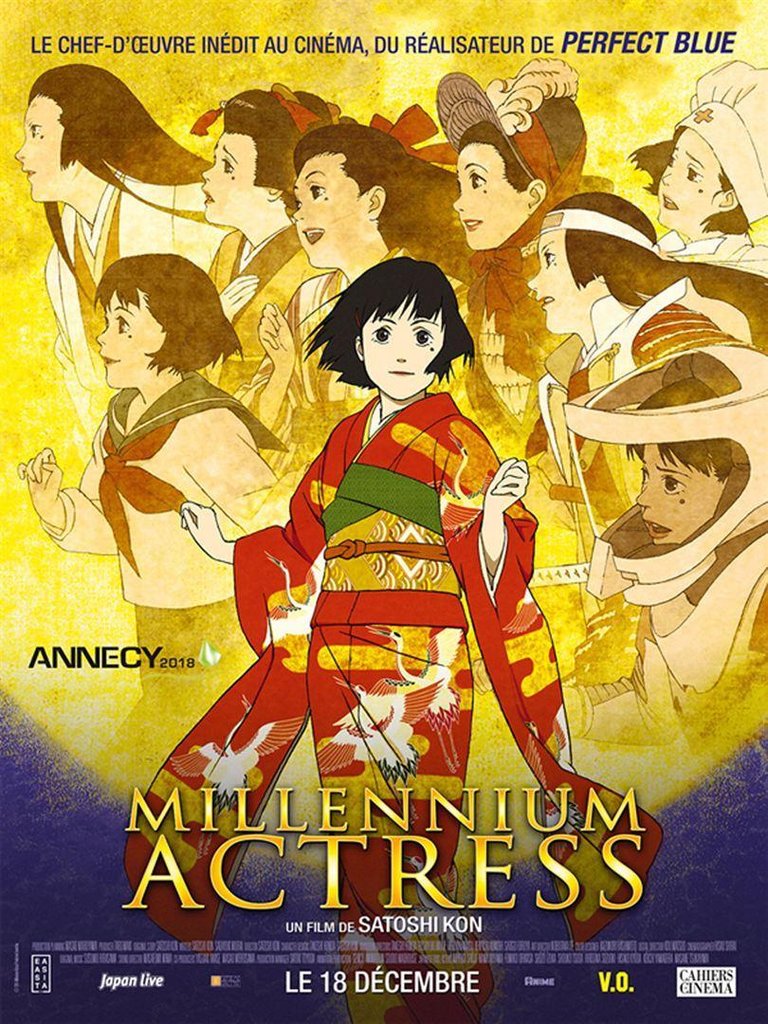
After finishing work on PB, Satoshi wanted to adapt the novel Paprika published in 1993, but due to the bankruptcy of the distributor, Satoshi had to suspend work on this project. In 2002, his second film, Millennium Actress, was released. Like I said, MA is such a positive trip compared to PB. The main character of the film is a super talented actress. Let's say a better and younger Meryl Streep. One day, at the height of his fame, he quits his job. After 30 years, she is visited by a journalist who persuades her to do an interview. The actress is finally convinced and talks about her career. We, as viewers, observe her memories from throughout her career. MA achieved even greater success than its predecessor, both in terms of reviews and earnings. The budget of both productions was quite similar, approximately 120 million yen. Sadayuki Murai was again responsible for the script. The talented composer Susumu Hirasawa (Berserk, films and anime series by Satoshi Kon) has joined the list of permanent collaborators.
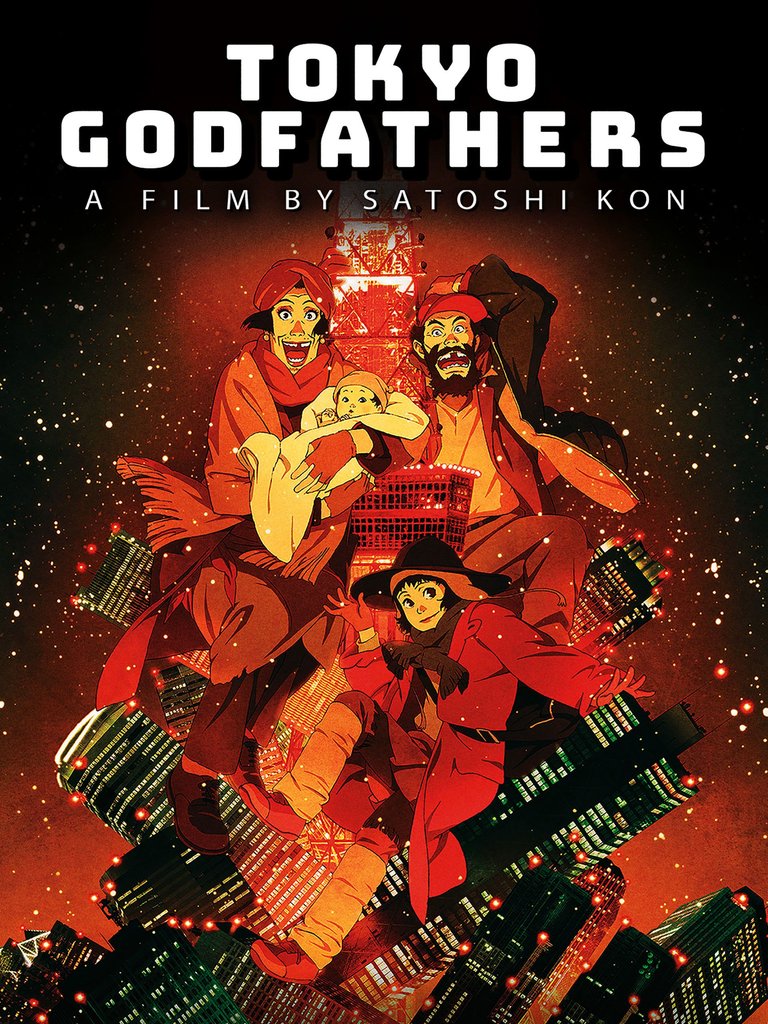
A year later, Satoshi Kon's lightest film hit theaters. The atmosphere is completely different from the debut, much more positive. During Christmas, three homeless people find an abandoned baby and try to find its parents. A very warm, touching and funny production. Additionally, it would be a good test to see whether someone is bothered by LGBT threads due to intolerance or poor work. When I first saw this movie as a teenager, I didn't know that one of the characters was transgender. Back then, I was at a stage where it bothered me a bit because of peer pressure. Hana was abandoned by her parents and grew up first in an orphanage and then with an older Drag Queen. I haven't seen the film for a long time, but from what I remember, LGBT threads are not forced into it, like in quite many modern films or series. It is natural and woven into the story, thus giving it depth and subsequent layers. Especially since this film depicts homelessness and abandonment in both a comedic and dramatic way. Tokyo Gofathers cost more than the previous two films combined and was written by Keiko Nobumoto.
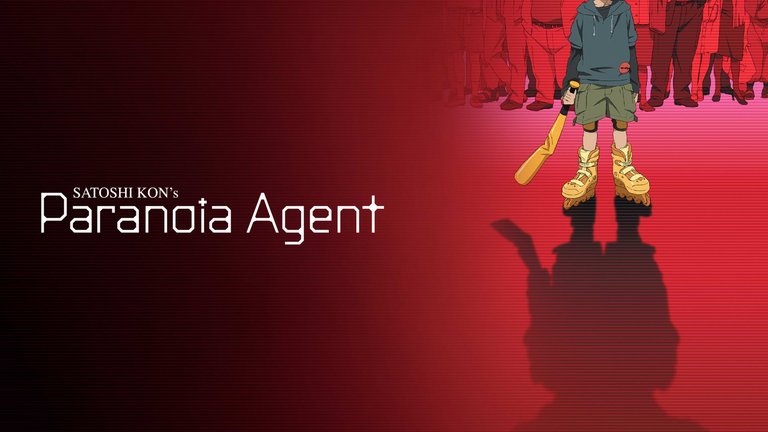
In 2004, Satoshi Kon returned to heavy topics with his only television series. Paranoia Agent, like Perfect Blue, takes no prisoners, and the director is once again poking our brains with a white-hot rod. The series is a collection of various ideas that he couldn't develop satisfactorily into a cinematic format, so he put all his notes together. The episodes are loosely connected into one whole, but each of them actually focuses on different diseases and people's problems. I remember three episodes the most: sexual harassment and spying on a young teenager, a woman suffering from a personality disorder (during the day she is a normal, working woman, like many others, and in the evening she becomes a prostitute addicted to sex), a grandfather who tries to remember important things from of your life. Hirasawa is responsible for the music and Seishi Minakami is responsible for the script. The studio that created the anime is Madhouse.
This music video shows the atmosphere of this anime very well. ->
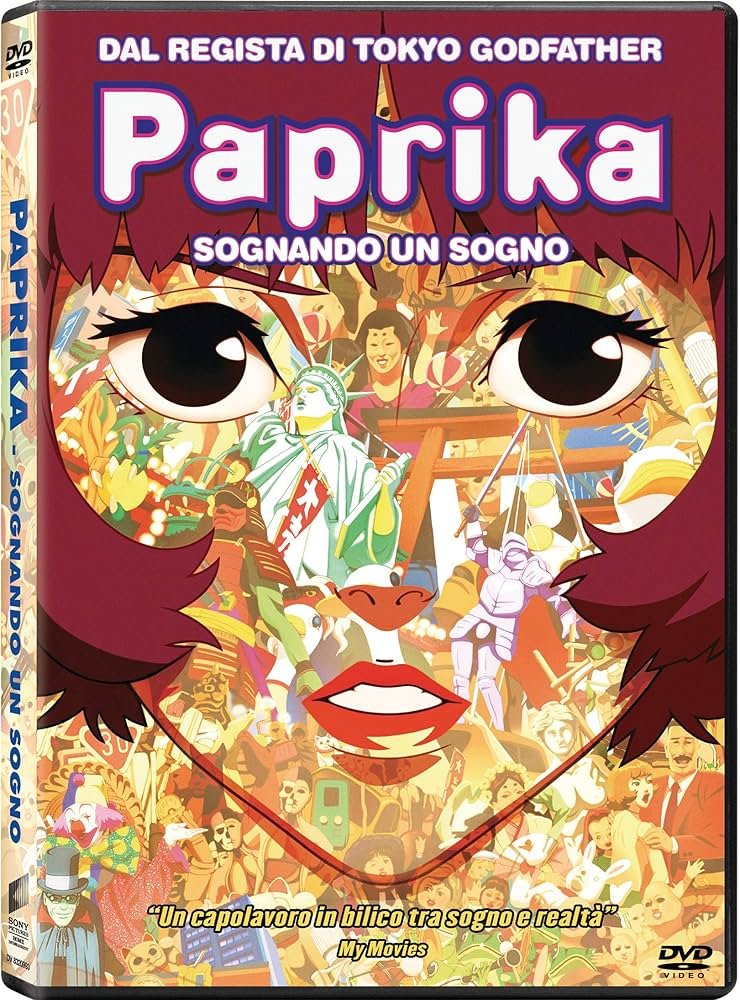
Two years later, Paprika's adaptation was released, which differed significantly from the director's original vision - "Everything but the fundamental story was changed." Paprika received a lot of awards and nominations, it was even among the productions nominated to participate in the fight for the Oscar, but lost during the selection process. In 2007, he was a guest of the Ani*Kuri program broadcast by NHK television. His 1-minute film titled Ohayō and clips of Mamoru Oshii, Makoto Shinkai and others were shown there. That same year, Satoshi Kon helped found the Japanese Animation Artists Association (JAniCA) and, of course, was a member of it.
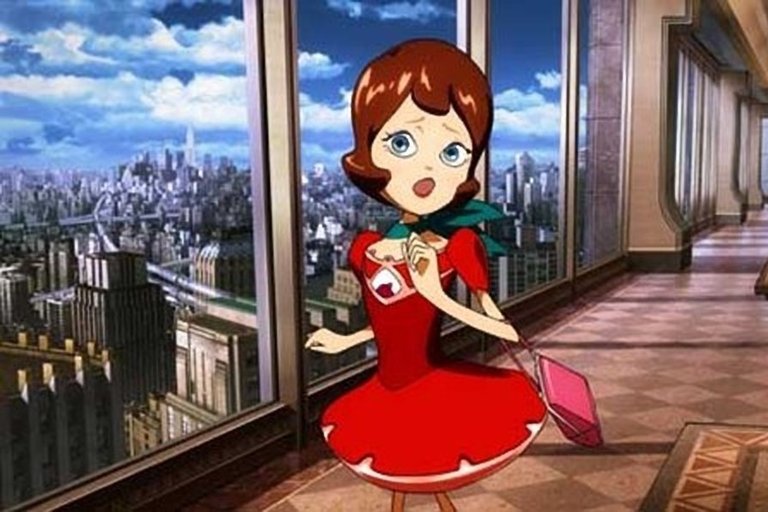
Shortly after appearing on Japanese television, Satoshi Kon began working on another film - Dreaming Machine. In May 2010, he was diagnosed with incurable pancreatic cancer, and the doctor gave him a brutal diagnosis - please close your affairs, because you don't have much time left. The director locked himself at home for half a year and just before his death, he wrote his last message, which his family posted on his blog. The Japanese did not want to inform the public and fans about his health condition. First of all, as I already said in the Shogun review, the inhabitants of the Land of the Rising Sun do not like to talk about their feelings. I'm not sure here, but I've been interested in Japan for most of my life, and each nation has its dominant features, so even if it didn't matter much, cultural factors shouldn't be underestimated. Secondly, Satoshi didn't want to brag about it out of shame. He lost weight quickly and his body looked like anyone who is seriously ill, i.e. bad. The news was shocking to everyone who didn't know about it. The shock was even greater because 3 years earlier, Satoshi was in quite good shape and was not that old, because on the day of his death he was 46 years old. Unfortunately, some diseases consume a person within a few months, especially types of cancer. That same year, he was named to the Fond Farewells in Time list, and Darren Aronofsky wrote a eulogy about Satoshi for a book that was published in Japan.
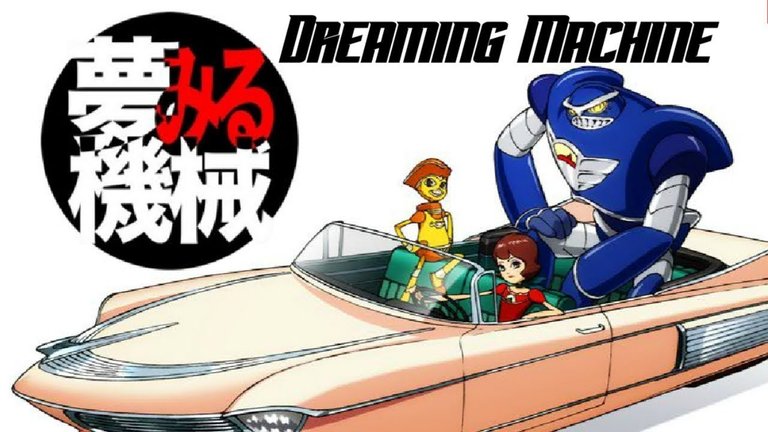
Madhouse studio wanted to finish work on his last production, but unfortunately it failed for several reasons. First of all, the director left the workplace without informing most of the employees, even his superiors (or at least the creator of the Madhouse studio and the producer of Dreaming Machine). Second, most of the work was unfinished. From what I see on Wikipedia, only 600 shots out of 1,500 were taken (two other sources confirm this information). It is true that Masao Maruyama (producer and founder of MH) wrote down all the comments and conclusions of the director, who was already on his deathbed, but there were still other problems. The third reason was money, if you are an adult and have some experience with it, I don't have to explain what it's like to run out of money. Maybe if Satoshi Kon was alive, this wouldn't be a problem, because it would be possible to obtain additional sponsors, make changes to the script, change demanding scenes to slightly simplified ones... Unfortunately, the head of the project died, which gave rise to further, smaller problems.
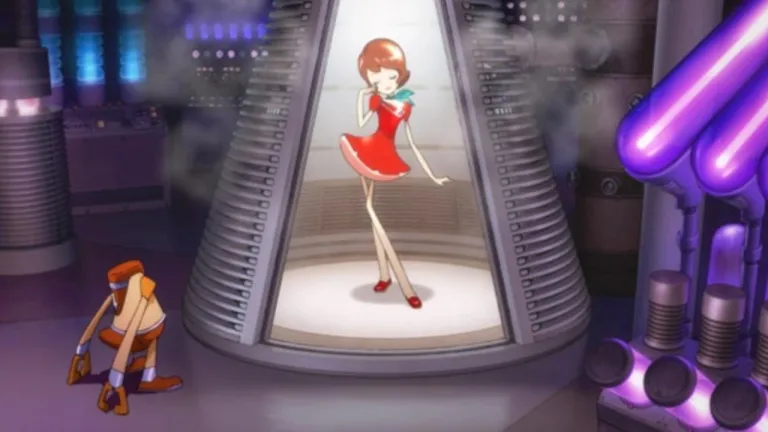
Maruyama tried to revive the project for years, looking for a replacement director and sponsors, both as an important person at the MH studio and MAPPA (founded by former employees of several Japanese anime studios). Unfortunately, nothing came of it. It is true that he had quite a lot of elements that would enable him to complete the work (storyboard, script, film frames with key scenes), but he was afraid to hand over this work to talented creators. He was afraid that the result would be a production not in the style of the original director, but in the style of whoever would finish it (he mentioned the name of Mamoru Hosoda, another outstanding director). Maruyama did not give up the search for a successor. He announced that maybe someone from outside Japan would take on this task, but as you can see in 2024, no one has volunteered yet. I would like to add that I was already a Satoshi Kon fanboy, so I followed all the news about his unfinished work. I wasn't in the studio nor do I know anyone who was there, so I don't know if that was really the case. However, from what I read, the studio and the rest of the developers really wanted to see the project through to completion. I don't remember the details, so I won't make things up, because I would probably add false information myself. However, it wasn't like they tried once or twice and ignored the project. There were attempts, Internet users also got involved in all the news, just like long ago DB fans with the slogans AF, DBAF, After Future etc. Unfortunately, with each subsequent attempt, the enthusiasm decreased and then disappeared completely. If I remember correctly, Mr. Maruyama last commented on Dreaming Machine after founding the MAPPA studio.
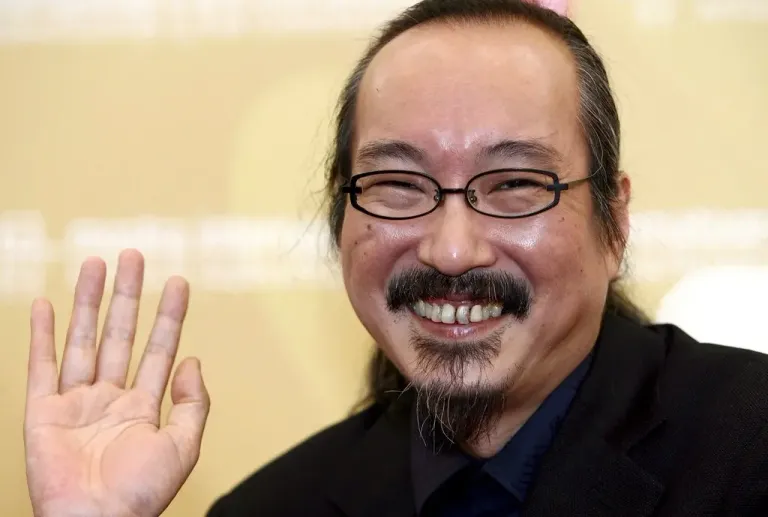
It seems to me that Satoshi had a greater impact on global pop culture and cinematography than on Japanese culture. Yes, he was appreciated, but apart from the period before and just after his death (+ anniversaries), I do not remember him being mentioned or quoted as often as, for example, Mamoru Hosoda. It's probably because of his heavy films. After all, Mirai, Summer Wars, Wolf Children etc. are easier to promote than a drug trip, even if positive like Millennium Actress or Tokyo Godfathers. Or I simply did not have access to such information, after all, what we received and receive from Japan is only a fraction of the information published. He could have appeared on TV more often, given interviews to journalists... There's no point in pretending, most people wouldn't care, and even if these programs were uploaded to the Internet (at least with English subtitles), only individual fans and even fewer hobbyists would be interested. However, in the case of world cinematography, his influence can be seen among many directors. I've already talked about Darren - when creating Requiem for a Dream, he was inspired by Perfect Blue. He was inspired to such an extent that many threads and some scenes from Black Swan are a literal copy or remake of Mimi Kirigoe's adventures. Aronofsky denied this, but you have to be blind to believe it. And even if you think I'm exaggerating at this point, check out the 3rd link. And if you are particularly stubborn, watch it for yourself. Moreover, in Christopher Nolan's Inception you will also find some similarities to Paprik (characters, scenes, main plot).
As for other manga, he also created: Yume no Kaseki (a collection of 15 short stories), Opus (an unfinished title published in 1995-1996). He won 16 competitions and received one award (Annie Awards 2019) posthumously.
Well, that's it. Let me know who you want to read about next. Maybe you can give me an idea :).
https://en.wikipedia.org/wiki/Satoshi_Kon
https://lwlies.com/articles/satoshi-kon-dreaming-machine-unfinished-meta-nightmares/
https://animationobsessive.substack.com/p/the-plan-for-satoshi-kons-final-film
https://www.cracked.com/article_19443_7-classic-movies-you-didnt-know-were-rip-offs.html
Sources of photos:
https://www.nytimes.com/2010/08/26/arts/design/26kon.html
https://www.artnews.com/art-news/news/satoshi-kon-documentary-1234598167/

Zapraszam na nową serię tekstów, które będą zbiorem podstawowych informacji o ważnych, wg mnie, twórcach, aktorach głosowych, reżyserach etc. Mówiąc słowo "ważnych" mam na myśli takie osoby, które osiągnęły sukces zawodowy, mają kilka ważnych prac na swoim koncie i wyróżniają się na tle konkurencji z branży. Postanowiłem zacząć od Satoshiego Kona, bo jest to jeden z najważniejszych i najbardziej utalentowanych twórców, jakich poznałem w moim życiu.
Satoshi Kon urodził się 10 października 1963 na wyspie Sapporo. Zmarł 24 sierpnia 2010 na raka trzustki w wieku 46 lat. Pracował jako reżyser, animator, scenarzysta oraz twórca mang (zarówno jako rysownik i scenarzysta, jak i wyłącznie jako rysownika). Satoshi wiedział co chce robić w przyszłości już na etapie liceum. W 1982 wykonał pierwszy krok w celu spełnienia swoich marzeń, dostając się na Uniwersytet Artystyczny Musashino. Jego debiutanckim komiksem był short pt. Toriko wydany w 1984, dzięki któremu zdobył drugie miejsce w 10 edycji konkursu Tetsuya Chiba organizowanego przez wydawnictwo Kodanasha. Ten mały sukces na pewno pomógł mu w jakimś stopniu przy znalezieniu pierwszej pracy. Został asystentem Katsuhiro Otomo (reżyser kultowego Akira, który do dzisiaj robi gigantyczne wrażenie swoją szczegółową i wybitnie płynną animacją). Po ukończeniu studiów, wydał 1-tomową mangę Kaikisen oraz napisał scenariusz do filmu Otomo World Apartament Horror. Rok później stworzył komiks World Apartament Horror, który powstał przy współpracy z Otomo (nie znam szczegółów, ale po opisie wydaje mi się, że to była głównie robota Satoshiego, a Otomo pomógł mu jedynie swoim rozpoznawalnym nazwiskiem, inkasując część zysków). Jest to zbiór 4 opowieści będących mangową adaptacją wcześniejszego filmu. To nie koniec ich współpracy, bo w 1991 Satoshi zadebiutował jako animator oraz jako projektant tła (background design) w filmie, do którego scenariusz napisał Otomo. Anime nazywa się Roujin Z.

W 1992 rozszerzył zakres swojej pracy przy 3 krótkich filmach składających się na zbiór zatytułowany Memories. Ich reżyserem był Koji Morimoto, zaś Satoshi odpowiadał za scenariusz, projekt tła i grafikę. Jest to ważny punkt w jego karierze, bo po raz pierwszy wykorzystał swój atut - niezwykłą umiejętność do łączenia fantazji z rzeczywistością. Widać to dobrze po jego Perfect Blue, Milenijnej Aktorce, Paprika, czy jedynym serialu animowanym - Paranoia Agent. Przy tych filmach można odnieść wrażenie, że Satoshi Kon korzystał z narkotyków, które rozszerzają świadomość człowieka. Nie wiem, czy tak było faktycznie, ale nie zdziwiłbym się. Tym bardziej że jego filmy mocno oddziałują na wyobraźnię i psychikę. Milenijna Aktorka i Paprika, zwłaszcza ten 1 tytuł, jest "pozytywnym tripem". Paprika i Tokyo Godfathers są trochę pozytywne, a trochę smutne, zaś PB i PA to jazda bez trzymanki.

To nie był jego jedyny kontakt z kultowym twórcą. Kolejnym wielkim nazwiskiem, z którym współpracował, był Mamoru Oshii. Jeśli go nie znacie, to w 1995 na zawsze odmienił losy światowej kinematografii i popkultury, tworząc kultową adaptację komiksu Ghost in the Shell. Jeżeli jesteście młodzi, to możecie nie wiedzieć, że premiera tego filmu zainspirowała twórców na całym świecie i jej echa słyszymy po dziś dzień. Choćby w postaci gry Cyberpunk 2077. Nim jednak skończył prace nad GitS, Mamoru tworzył drugi film kinowy Patlabor. Satoshi Kon był jednym z pięciu głównych grafików. Współtworzył też słynną OVA Jojo's Bizzare Adventure - przy drugim odcinku jako kluczowy animator, zaś przy epizodzie 5 odpowiadał za scenariusz i storyboradach. Ich współpraca nie zakończyła się zbyt pozytywnie. Satoshi i Mamoru współtworzyli mangę Seraphim: Wings of 266,613,336 (za rysunki odpowiadał Satoshi, a za fabułę Mamoru). Jednak wraz z wydawaniem kolejnych rozdziałów, wizje obu twórców zaczęły się coraz bardziej różnić. W efekcie praca nad komiksem najpierw została zawieszona, a potem wstrzymana. Wtedy też, reżyser postanowił ograniczyć tworzenie komiksów i skupił się na tworzeniu anime.

Jego debiutanckim filmem był Perfect Blue wydany w 1998 roku. Film ten do dzisiaj pozostaje jedną z najlepszych psychodelicznych produkcji, jakie widziałem w swoim życiu. Jeżeli lubicie filmy Darrena Aronofsky'ego, to polubicie filmy Japończyka. Obaj reżyserzy uwielbiają wbić rozgrzany do białości pręt w mózg, by doprowadzać nas do szaleństwa. Btw. polecam obejrzeć Black Swan - to najlepsza adaptacja anime wykonana przez Hollywood. No tuż zaraz za Pacific Rim będący adaptacją NGE. Tylko w przypadku filmu z Natalie Portman, Darren pożyczył znacznie więcej niż Del Toro. Za każdym razem, gdy oglądam ten film, mam dwudniowego kaca. Nie tylko dlatego, że jest ciężki w odbiorze, ale jest też brudny. Emocjonalny gnój wciąga nas na dno, a brud na ekranie (jak w starych, dobrych filmach sci-fi sprzed dekad, brakuje mi go w dzisiejszych, zbyt czystych produkcjach) działa jak zmiękczający narkotyk. Uwielbiam ten film. Swoją drogą, pisząc ten tekst dowiedziałem się, że to adaptacja powieści Yoshizaku Takeuchi... No to w 2025 napiszę jej recenzję.

Wracając, jest to pierwszy film Satoshiego Kona i studia Madhouse. Wyszło to z inicjatywy producenta o imieniu Masao Maruyama, który był zadowolony z pracy Satoshiego przy Jojo. Reżyser nie był zadowolony z pierwszej wersji scenariusza i poprosił pisarza o zgodę na wprowadzenie zmian. Autor książki przystał na jego prośbę, ale postawił jeden warunek. Satoshi musiał zachować 3 kluczowe elementy: motyw idolki, klimat horroru i wątek stalkingu. Scenariusz został poprawiony przez Sadayuki Murai, który z tego co zrozumiałem tekst źródłowy, współdzielił wizję zatarcia granicy między rzeczywistością, a wyobraźnią. W '97 i '98 pomagał odpowiednio przy 2 epizodzie Detatoko Princess i 15 odcinku Master Keaton. W obu przypadkach jako Key Animator.

Po zakończeniu prac nad PB, Satoshi chciał zrobić adaptację powieści Paprika wydanej w 1993, ale przez bankructwo dystrybutora, Satoshi musiał zawiesić prace nad tym projektem. W 2002 do kin trafił jego drugi film, Milenijna Aktorka. Tak jak mówiłem, MA jest takim pozytywnym tripem w porównaniu do PB. Główną bohaterką filmu jest super utalentowana aktorka. Powiedzmy, że taka lepsza i młodsza Meryl Streep. Pewnego dnia, będąc u szczytu sławy, rezygnuje ze swojej pracy. Po 30 latach odwiedza ją dziennikarz, który długo namawia ją na wywiad. Aktorka w końcu daje się przekonać i opowiada o swojej karierze. My jako widzowie, obserwujemy jej wspomnienia z całej kariery. MA osiągnęła jeszcze większy sukces od poprzednika, zarówno w kwestii recenzji, jak i zarobków. Budżet obu produkcji był dość zbliżony, wynosił około 120 milionów jenów. Za scenariusz ponownie odpowiadał Sadayuki Murai. Do listy stałych współpracowników dołączył utalentowany kompozytor Susumu Hirasawa (Berserk, filmy i serial anime od Satoshiego Kona).

Rok później do kin trafił najlżejszy film od Satoshiego Kona. Klimat zupełnie odmienny od debiutu, znacznie bardziej pozytywny. Trójka bezdomnych w trakcie Bożego Narodzenia, znajduje porzuconego niemowlaka i próbują znaleźć jego rodziców. Bardzo ciepła, wzruszająca i zabawna produkcja. Dodatkowo byłby to dobry test na to, czy komuś przeszkadzają wątki LGBT z powodu nietolerancji czy przez źle wykonaną pracę. Gdy obejrzałem ten film po raz pierwszy jako nastolatek, nie wiedziałem że jeden z bohaterów jest transseksualny. Wtedy byłem na etapie, gdy mi to trochę przeszkadzało przez presję rówieśniczą. Hana została porzucona przez rodziców i wychowywała się najpierw w sierocińcu, a potem u starszej Drag Queen. Nie widziałem filmu już długi czas, ale z tego co pamiętam, wątki LGBT nie są tam wciskane na siłę, jak w dość wielu współczesnych filmach, czy serialach. Jest naturalny i wpleciony w historię, nadając jej tym samym głębi i kolejnych warstw. Zwłaszcza że ten film pokazuje bezdomność i porzucenie w sposób komediowy, jak i dramatyczny. Tokyo Gofathers kosztowało więcej niż dwa poprzednie filmy razem wzięte, a za scenariusz odpowiadała Keiko Nobumoto.

W 2004 Satoshi Kon powrócił do ciężkich tematów, wydając swój jedyny serial telewizyjny. Paranoia Agent podobnie jak Perfect Blue, nie bierze jeńców, a reżyser ponownie grzebie nam w mózgu rozgrzanym do białości prętem. Serial jest zbiorem różnych pomysłów, których nie umiał rozwinąć w satysfakcjonujący sposób do kinowego formatu, więc zebrał do kupy wszystkie notatki. Odcinki łączą się luźno w jedną całość, ale tak naprawdę każdy z nich skupia się na różnych chorobach i problemach ludzi. Najbardziej zapadły mi w pamięci trzy odcinki: molestowanie seksualne i podglądanie młodej nastolatki, kobieta chorująca na zaburzenie osobowości (za dnia jest normalną, pracującą kobietą, jakich wiele, a wieczorem staje się prostytutką uzależnioną od seksu), dziadek który próbuje sobie przypomnieć ważne rzeczy ze swojego życia. Za muzykę odpowiada Hirasawa, a za scenariusz Seishi Minakami. Studio które stworzyło anime to Madhouse.
Ten teledysk bardzo dobrze przedstawia klimat tego anime. ->

Dwa lata później do kin trafiła adaptacja Papriki, która znacząco różniła się od pierwotnej wizji reżysera - "Everything but the fundamental story was changed." Paprika otrzymała mnóstwo nagród i nominacji, była nawet wśród produkcji nominowanych do uczestniczenia w walce o Oscara, ale przegrała podczas procesu selekcji. W 2007 był gościem programu Ani*Kuri nadawanym przez telewizję NHK. Został tam wyświetlony jego 1-minutowy film zatytułowany Ohayō oraz klipy Mamoru Oshii, Makoto Shinkaia i innych. W tym samym roku Satoshi Kon pomógł założyć Stowarzyszenie Japońskich Twórców Animacji (JAniCA) oraz rzecz jasna był jego członkiem.

Niedługi czas po występie w Japońskiej telewizji, Satoshi Kon zaczął prace nad kolejnym filmem - Dreaming Machine. W maju 2010, zdiagnozowano u niego nieuleczalnego raka trzustki, a lekarz postawił przed nim brutalną diagnozę - proszę zamknąć swoje sprawy, bo nie zostało Panu wiele czasu. Reżyser zamknął się w domu na pół roku i tuż przed śmiercią, napisał swoją ostatnią wiadomość, którą rodzina przekazała na jego bloga. Japończyk nie chciał informować opinii publicznej oraz fanów o swoim stanie zdrowia. Po pierwsze, jak już mówiłem w recenzji Shogun, mieszkańcy Kraju Kwitnącej Wiśni nie lubią mówić o swoich uczuciach. Ttutaj nie mam pewności, ale interesuje się Japonią większość mojego życia, a każdy naród ma swoje cechy dominujące, więc nawet jeśli nie miało to dużego znaczenia, to nie wolno lekceważyć czynników kulturowych. Po drugie, Satoshi nie chciał się tym chwalić z powodu wstydu. Szybko schudł, a jego ciało wyglądało, jak u każdego, kto poważnie choruje, czyli źle. Informacja była szokująca dla wszystkich, którzy o tym nie wiedzieli. Szok był tym większy, że 3 lata wcześniej Satoshi był w całkiem dobrej kondycji i nie był aż tak stary, bo w dniu śmierci miał 46 lat. Niestety, niektóre choroby pożerają człowieka w ciągu kilku miesięcy, zwłaszcza takie typy raka. W tym samym roku trafił na listę Fond Farewells in Time (lista zasłużonych osób), a Darren Aronofsky napisał pochwałę o Satoshim na potrzeby książki, która została wydana w Japonii.

Studio Madhouse chciało dokończyć prace nad jego ostatnią produkcją, ale niestety nie udało się to z kilku powodów. Po pierwsze, reżyser opuścił miejsce pracy nie informując większości pracowników, nawet swoich przełożonych (a przynajmniej twórcy studia Madhouse i producenta Dreaming Machine). Po drugie, większość roboty była nieskończona. Z tego co widzę na Wikipedii, zrealizowano tylko 600 ujęć z 1500 (dwa inne źródła potwierdzają tę informację). Co prawda Masao Maruyama (producent i założyciel MH) zapisał wszystkie uwagi i wnioski reżysera, który był już na łożu śmierci, ale były jeszcze inne problemy. Trzecim powodem były pieniądze, jeżeli jesteście dorośli i macie jakieś doświadczenie z nimi, to nie muszę tłumaczyć, jak to jest, gdy ich zabraknie. Może gdyby Satoshi Kon żył, to nie byłoby to problemem, bo można byłoby pozyskać dodatkowych sponsorów, dokonać zmian w scenariuszu, zmienić wymagające sceny na nieco uproszczone... Niestety, zmarła głowa projektu, co zrodziło kolejne, mniejsze problemy.

Maruyama próbował wznowić projekt przez lata szukając zastępcy na stanowisko reżysera i sponsorów, zarówno jako ważna osoba w studiu MH, jak i MAPPA (założone przez byłych pracowników kilku Japońskich studiów odpowiedzialnych za anime). Niestety nic z tego nie wyszło. Co prawda miał dość dużo elementów, które umożliwiłyby mu dokończenie prac (scenorys, scenariusz, klatki filmów z kluczowymi scenami), ale bał się przekazać tę pracę utalentowanym twórcom. Bał się, że wyjdzie z tego produkcja nie w stylu oryginalnego reżysera, a tego kto dokończy (wymienił nazwisko Mamoru Hosody, innego wybitnego reżysera). Maruyama nie zrezygnował z poszukiwania następcy. Ogłosił że może ktoś spoza Japonii podejmie się tego zadania, ale jak widać w 2024, jeszcze nikt się nie zgłosił. Od siebie dodam, że już wtedy byłem fanboyem Satoshiego Kona, więc śledziłem wszystkie newsy o jego niedokończonym dziele. Nie byłem w studiu ani nie znam kogokolwiek, kto tam był, więc nie wiem, czy tak było naprawdę. Jednakże z tego co czytałem, studiu i reszcie twórców naprawdę zależało na doprowadzeniu projektu do końca. Nie pamiętam szczegółów, więc nie będę zmyślał, bo pewnie dodałbym od siebie fałszywe informacje. Natomiast nie było to tak, że spróbowali raz, czy dwa razy i zignorowali ten projekt. Próby były, internauci również angażowali się we wszystkie newsy, tak jak dawno temu fani DB na hasła AF, DBAF, After Future etc. Niestety wraz z każdą kolejną próbą, entuzjazm malał, a potem zupełnie zgasł. Jeśli dobrze pamiętam, pan Maruyama wypowiedział się o Dreaming Machine po raz ostatni po założeniu studia MAPPA.

Wydaje mi się, że Satoshi miał większy wpływ na światową popkulturę i kinematografię niż Japońską. Owszem, był doceniany, ale pomijając okres przed i tuż po śmierci (+ rocznice), to nie przypominam sobie by był tak często wymieniany lub cytowany, jak np. Mamoru Hosoda. Pewnie to z uwagi na jego ciężkie filmy. W końcu Mirai, Summer Wars, Wolf Children etc. są łatwiejsze w promocji niż narkotyczny trip, nawet jeśli pozytywny jak Milenijna Aktorka, czy Tokyo Godfathers. Albo po prostu nie miałem dostępu do takich informacji, w końcu to co dostawaliśmy i dostajemy z Japonii, to zaledwie promil publikowanych informacji. Mógł częściej pokazywać się w telewizji, udzielać wywiadów dziennikarzom... Nie ma co udawać, większość ludzi miałaby to gdzieś i nawet gdyby uploadowano te programy do sieci (choćby z angielskimi napisami), zainteresowaliby się jedynie pojedynczy fani i jeszcze mniej hobbystów. Natomiast w przypadku światowej kinematografii, widać jego wpływ u wielu reżyserów. O Darrenie już mówiłem - tworząc Requiem for a Dream, inspirował się Perfect Blue. Zainspirował się do tego stopnia, że wiele wątków i niektóre sceny z Black Swan, to dosłowna kopia lub przeróbka perypetii Mimi Kirigoe. Aronofsky zaprzeczył temu, ale żeby w to uwierzyć trzeba być ślepym. I nawet jeśli uważacie, że w tym momencie przesadzam, zajrzyjcie do 3 linka. A jeśli jesteście wyjątkowo uparci, to obejrzyjcie sami. Poza tym, w Incepcji Christophera Nolana również znajdziecie pewne podobieństwa do Paprika (postacie, sceny, główny wątek fabularny).
Jeśli chodzi o pozostałe mangi, to stworzył też: Yume no Kaseki (zbiór 15 krótkich opowieści), Opus (niedokończony tytuł wydawany w 1995-1996). Wygrał w 16 konkursach, a jedną nagrodę (Annie Awards 2019) otrzymał pośmiertnie.
No i to tyle. Dajcie znać, o kim chcecie przeczytać następnym razem. Może podsuniecie mi pomysł :).
https://en.wikipedia.org/wiki/Satoshi_Kon (dla tych co widzieli - wiedziałem, że o czymś zapomniałem xD).
https://lwlies.com/articles/satoshi-kon-dreaming-machine-unfinished-meta-nightmares/
https://animationobsessive.substack.com/p/the-plan-for-satoshi-kons-final-film
https://www.cracked.com/article_19443_7-classic-movies-you-didnt-know-were-rip-offs.html
Źródła zdjęć:
https://www.nytimes.com/2010/08/26/arts/design/26kon.html
https://www.artnews.com/art-news/news/satoshi-kon-documentary-1234598167/
Cześć, korzystasz z discorda?
Cześć, nie, ale mam konto. Jeśli chcesz, to moge wejść, ale ja się na tym generalnie średnio znam, więc Ty musisz wszystko ogarnąć z zaproszeniem / rozpoczęciem rozmowy. :P
Szukać herosik?
Tak, Herosik
@tipu curate 8
Upvoted 👌 (Mana: 0/75) Liquid rewards.
Dziękuję! :)
I've only watched two of his works so far... and I got a bunch of them on my to-watch list as well. :)
What's the name of the other one? Because I remember we talked about the Millennium Actress not long ago on your blog.
I envy. I wish I were in your position not to know how good cartoons Satoshi creates. :)
I've watched Perfect Blue... I remember we were comparing the two... Perfect Blue being the usual dark anime Satoshi makes and Millennium Actress being a mellow and feel-good one. :)
Hahaha... But I also kind of regretted not watching any of them sooner... xDD
Wow... I didn't know that so many masterpieces of the science fiction and fantasy genre existed thanks to a single creator. Excellent post.
I would like to know all the valuable series/films that Japan has released. Unfortunately, it's too much, even if you watch only the most outstanding series.
Hello herosik!
It's nice to let you know that your article will take 14th place.
Your post is among 15 Best articles voted 7 days ago by the @hive-lu | King Lucoin Curator by szejq
You receive 🎖 0.4 unique LUBEST tokens as a reward. You can support Lu world and your curator, then he and you will receive 10x more of the winning token. There is a buyout offer waiting for him on the stock exchange. All you need to do is reblog Daily Report 435 with your winnings.
Buy Lu on the Hive-Engine exchange | World of Lu created by szejq
STOPor to resume write a wordSTART